1. Victorian Homes (Without Modern Upgrades)
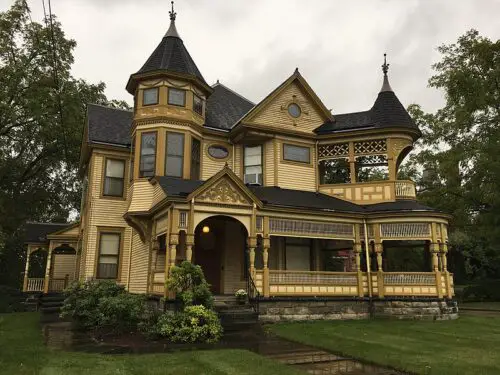
Victorian homes have undeniable charm, but according to Forbes, they come with a lot of baggage. Their intricate woodwork, steep gables, and decorative trim look beautiful, but the upkeep can be overwhelming. Many have outdated plumbing, poor insulation, and small, closed-off rooms that don’t fit modern living trends. By 2030, Victorian homes that haven’t been updated may become too costly and inconvenient for most buyers.
Restoring a Victorian home to modern standards requires significant investment, which many homeowners aren’t willing to make. Their old wiring, drafty windows, and high-maintenance exteriors add to the hassle and expense. While well-maintained ones will always have a niche appeal, those in disrepair may be left abandoned or converted into multi-unit housing. If they don’t evolve with the times, Victorian homes could fall out of mainstream favor.
2. Ranch-Style Homes (with Small Square Footage)

Ranch-style homes have been a staple for decades, but smaller ones are becoming less desirable, according to Madison Homebuilders. While single-story living is still in demand, tiny ranch homes from the mid-20th century lack the space modern families need. Many have outdated layouts with small kitchens, cramped bedrooms, and minimal storage. As homebuyers prioritize functionality, these smaller ranch homes may struggle to stay relevant.
Renovating them can be expensive, especially when trying to add square footage or modernize outdated interiors. Open-concept living is difficult to achieve without major structural changes, making them less appealing compared to newer builds. Additionally, their older construction often means poor insulation and outdated electrical and plumbing systems. Without significant upgrades, these homes may be seen as too small and impractical for future buyers.
3. McMansions
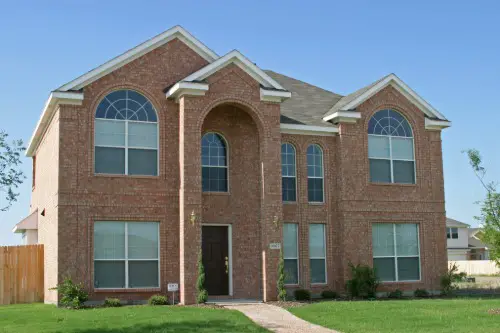
Big, showy, and often built with questionable craftsmanship, McMansions are already on the decline, according to Forbes. These oversized homes became popular in the late ’90s and early 2000s, but their inefficient layouts and high maintenance costs are turning buyers away. Younger generations prefer smaller, energy-efficient homes that are easier to maintain and heat. By 2030, many McMansions will likely be sitting unsold or repurposed into multi-family housing.
Their outdated architecture often includes awkward layouts, unnecessary decorative elements, and cheap materials. The sheer size makes them expensive to heat, cool, and furnish, which doesn’t align with today’s push for sustainability. Many were built in sprawling suburban developments, requiring long commutes that younger buyers are trying to avoid. As the market shifts toward functional and eco-friendly designs, McMansions are becoming relics of a different era.
4. Split-Level Homes
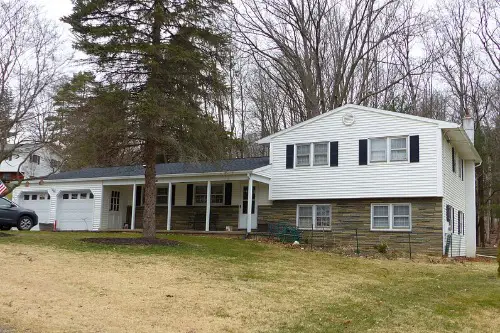
Once a mid-century staple, split-level homes are struggling to stay relevant, according to the National Association of REALTORS. Their compartmentalized design doesn’t suit today’s open-concept trends, and those multiple short staircases can be a nightmare for aging homeowners. Many buyers see them as outdated and inconvenient, especially since they often require renovations to modernize the layout. By 2030, these homes will likely be harder to sell, with younger buyers looking for more accessible floor plans.
Another issue is their lack of natural flow between living spaces, which makes them feel cramped compared to newer homes. Remodeling them to create a seamless layout can be costly and complicated due to their unique construction. As accessibility and single-story living become more desirable, split-level homes will continue to decline in popularity. Unless they undergo significant updates, they may become a tough sell in the coming years.
5. Tuscan-Style Homes
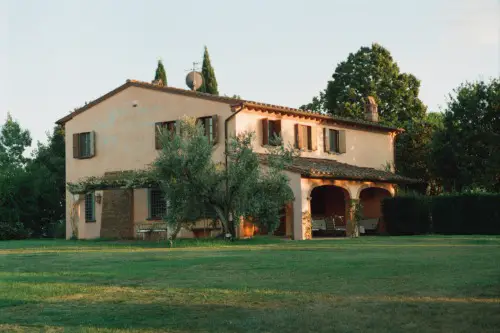
Tuscan-style homes were all the rage in the early 2000s, but their heavy, ornate designs are falling out of favor, according to KTJ Design Co. Dark wood, textured walls, and wrought iron details once screamed luxury, but now they feel outdated and overly dramatic. Today’s buyers prefer bright, airy spaces with clean lines and neutral color palettes. By 2030, Tuscan-style homes will likely be seen as relics of a bygone trend.
Their bulky columns, arched doorways, and earth-toned exteriors no longer match the modern aesthetic. Homeowners looking to sell often find themselves painting over dark walls and replacing heavy cabinetry with sleeker, minimalist designs. The cost of updating these homes to match contemporary tastes can be high, which may discourage buyers. As the housing market leans toward simplicity and efficiency, Tuscan homes are losing their charm.
6. Mobile Homes (Pre-2000 Models)

Affordable and widely available, mobile homes have provided housing for many, but older models are becoming obsolete. Pre-2000 mobile homes often have poor insulation, outdated materials, and structural weaknesses that don’t meet modern energy efficiency standards. As housing regulations tighten and sustainability becomes a bigger priority, these homes will be increasingly difficult to maintain. By 2030, many older mobile homes may be deemed unlivable or too costly to repair.
Newer manufactured homes have better energy efficiency and improved durability, making older models look outdated in comparison. The lack of long-term investment value also discourages new buyers from choosing them over other affordable options. In addition, many mobile home parks are disappearing, making it harder to find places to keep these homes. Unless major renovations are done, older mobile homes are likely to phase out in the next decade.
7. Colonial-Style Homes (Without Modernization)
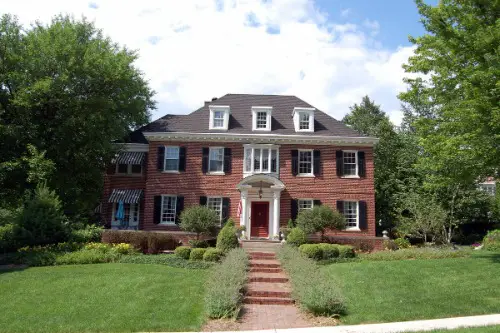
Colonial-style homes have been a classic American choice, but they can feel outdated if not properly updated. Their traditional layouts often include formal dining rooms and separate living areas, which don’t align with today’s preference for open floor plans. Many buyers see these homes as too rigid and compartmentalized, making them less appealing for modern living. By 2030, unrenovated Colonials may struggle to compete with more contemporary designs.
While some Colonial homes have been successfully modernized, others still feature outdated kitchens, old carpeting, and inefficient layouts. The lack of large windows and natural light can make them feel darker and less inviting than newer builds. Renovating a Colonial to fit modern tastes often requires significant investment, deterring younger buyers. Without updates, many Colonial-style homes may start losing value in the near future.
8. Mediterranean-Style Homes
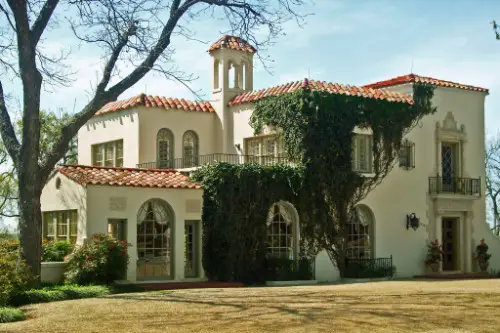
Mediterranean-style homes had a major moment in the early 2000s, especially in warmer climates. Their stucco exteriors, red tile roofs, and ornate ironwork made them feel luxurious, but today’s buyers are moving away from the look. The dark interiors, heavy details, and textured walls feel outdated compared to the light, minimalist styles that are trending now. By 2030, many Mediterranean-style homes may struggle to attract buyers unless they undergo significant updates.
Another issue is that these homes were often built with less insulation, making them inefficient in extreme weather conditions. The clay tile roofs, while durable, are expensive to repair, which can be a deterrent for younger buyers. Additionally, their designs don’t always accommodate modern open-concept living, making renovations a challenge. As homebuyers shift toward clean lines and sustainable materials, Mediterranean homes could fade from popularity.
9. Cape Cod Homes (With Original Layouts)
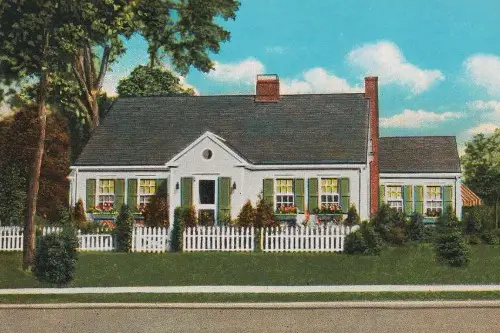
Cape Cod homes have a nostalgic charm, but their original layouts don’t fit modern needs. These homes are often small, with steeply pitched roofs, low ceilings, and minimal natural light. Many also have outdated insulation, making them expensive to heat and cool compared to newer homes. By 2030, Cape Cod homes that haven’t been significantly updated may be seen as impractical and inefficient.
While they work well in certain climates, their small rooms and limited storage make them less appealing to growing families. Expanding or remodeling them can be challenging due to their roof structure and modest footprints. Some homeowners have successfully modernized Cape Cods by opening up interiors and adding dormers, but the cost can be steep. Without updates, these homes may struggle to compete with more spacious and functional designs.
10. Log Cabins

Rustic log cabins once symbolized cozy, country living, but they are becoming less desirable outside of vacation areas. Maintaining a log home requires constant upkeep to prevent wood rot, insect damage, and weather-related wear. They also tend to have poor energy efficiency, leading to high heating and cooling costs. By 2030, many buyers may shy away from log homes due to the high maintenance demands.
Another drawback is that log cabins don’t always blend well with modern amenities. Updating them often means significant work to add insulation, upgrade plumbing, and install contemporary fixtures. In some areas, log homes are already being repurposed as Airbnb rentals rather than primary residences. Unless major technological improvements make them easier to maintain, their appeal as year-round homes may continue to fade.
11. Shotgun Houses
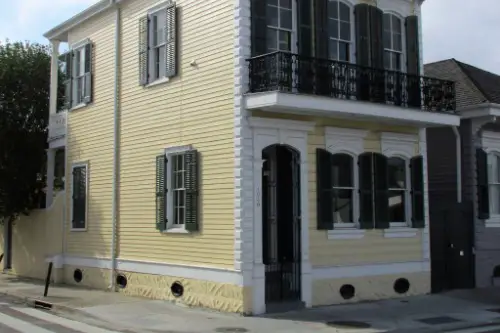
Shotgun houses have historical significance, particularly in the South, but their narrow layouts don’t work well for modern living. These homes were designed to maximize airflow before air conditioning was common, but today, they feel cramped and inefficient. With rooms arranged in a straight line, there’s little privacy, making them impractical for families or remote workers. By 2030, many shotgun homes may be repurposed or abandoned due to their outdated design.
Renovating these homes can be tricky because of their small footprints and lack of flexibility. Many lack proper insulation, which leads to high energy costs, and their historical status can make updates expensive. While some have been successfully turned into trendy urban housing, many remain in poor condition and aren’t worth the cost to modernize. As homebuyers seek more space and privacy, the traditional shotgun layout will continue to lose relevance.
12. Geodesic Dome Homes
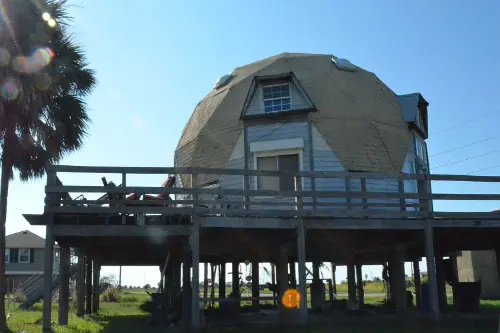
Geodesic dome homes were once considered futuristic, but their unconventional design has kept them from going mainstream. While they are energy-efficient and structurally strong, their curved interiors make it difficult to place furniture and install standard fixtures. Many homeowners struggle with awkward layouts and limited resale appeal. By 2030, geodesic dome homes may be seen more as architectural experiments than practical living spaces.
One major issue is that repairs and renovations can be complicated due to their non-traditional construction. Windows and doors often require custom fittings, which adds to maintenance costs. Additionally, zoning laws in many areas don’t accommodate these unique structures, making them difficult to build or expand. While they’ll always have a niche following, they aren’t likely to gain mass appeal in the future.
13. A-Frame Homes

A-frame homes gained popularity as stylish vacation cabins, but they have limitations for full-time living. Their steeply pitched roofs limit upper-floor space, making it hard to maximize square footage. Storage is often minimal, and the lack of traditional walls makes it difficult to customize the layout. By 2030, A-frame homes may remain popular for short-term rentals but less practical as primary residences.
Another downside is that they can be expensive to heat and cool due to their large glass windows and high ceilings. Insulation improvements can help, but many older A-frame homes lack energy-efficient upgrades. While they offer a unique aesthetic, their impractical layouts don’t always align with modern housing needs. Without major modifications, they may be seen as more of a novelty than a practical long-term home.
14. Prairie-Style Homes
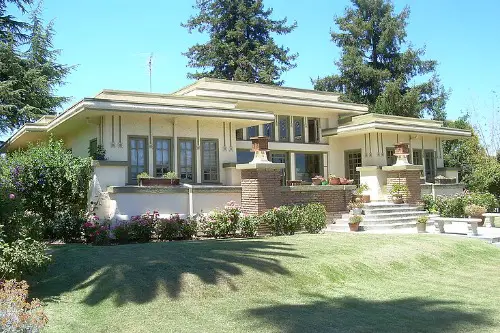
Prairie-style homes, made famous by Frank Lloyd Wright, emphasize horizontal lines, flat roofs, and open spaces. While beautiful, they require significant maintenance due to their large roof overhangs and custom woodwork. Many also have large, single-pane windows that aren’t energy-efficient, leading to high heating and cooling costs. By 2030, these homes may struggle to compete with more sustainable and low-maintenance options.
Flat roofs, in particular, can be problematic, as they often lead to drainage issues and expensive repairs. While some homeowners appreciate the architectural style, it doesn’t always suit modern lifestyle needs. Renovating these homes to meet current efficiency standards can be expensive, discouraging younger buyers. Unless updated for sustainability, Prairie-style homes may become less desirable in the future.


